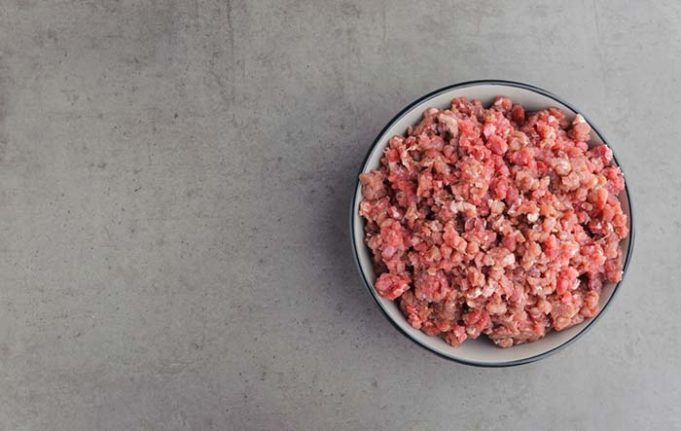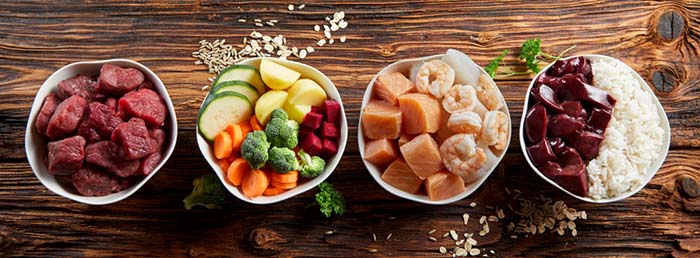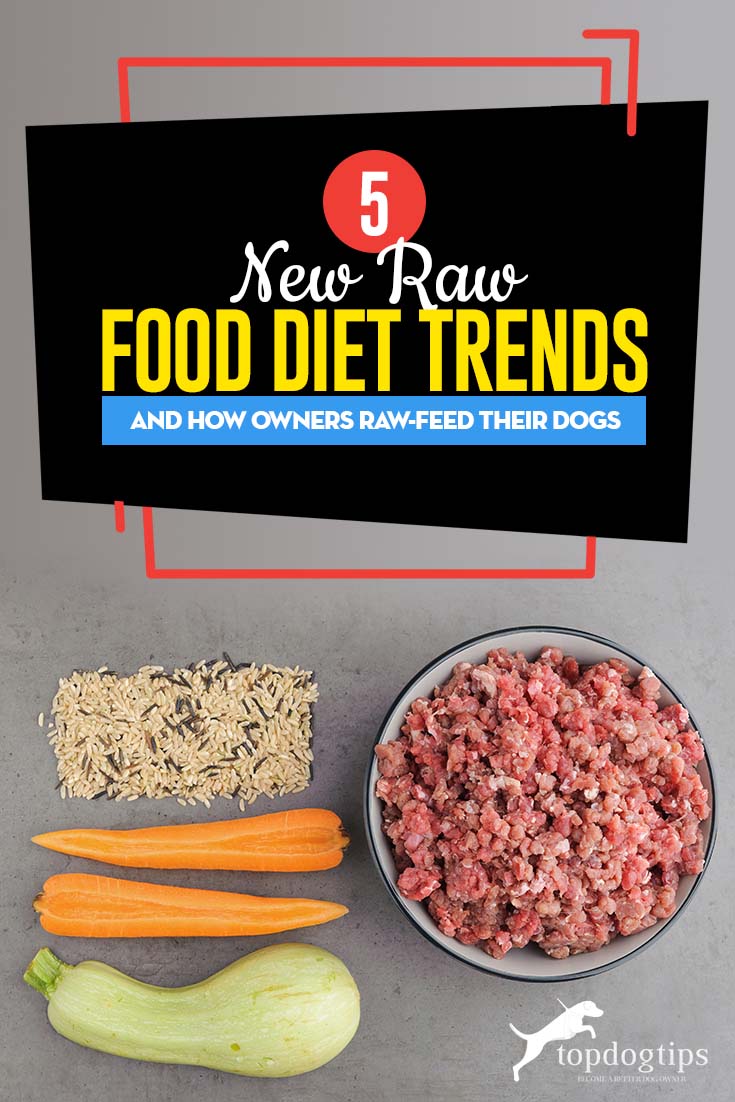Table of Contents
Despite health warnings and issues about raw meat feeding, there's a growing consumer interest, particularly among pet owners, for raw dog food diet. With constant dog food recalls, more owners are switching to feeding high-protein meals of mostly fresh meat, just as the dogs' ancestors have been consuming their food for centuries.
Homemade raw dog food meals aren't the only trend on the rise, however. Sales for raw pet food, both fresh and frozen, as well as dehydrated dog food and freeze-dried variants, have gone up in the last few years, according to a Pet Food Industry report (source). Insiders expect the trend will still grow, especially now that we have seen some scientific evidence of the benefits of raw feeding from recent studies.
5 Raw Food Diet Trends
Here are five of the most popular raw dog food diet trends we've recently observed.
1. Raw feeding for dogs is better than dry dog food
Raw feeders aren't the least bit bothered by the criticisms surrounding raw dog food diets. They will continue to feed their dogs raw meat over canned dog food or dry kibble since the latter is deemed more unhealthy, with ingredients always containing byproducts, fillers, preservatives, and unhealthy additives.
While there is some scientific evidence on the dangers of raw feeding (such as bacteria) or unbalanced meals, raw feeding proponents believe that doing things correctly, such as using healthy meats and paying attention to exact nutritional value, is fairly easy. Moreover, many pet owners feeding raw believe that the constant push for dry kibble is just a concept perpetuated by the veterinary industry in conjunction with dog food companies.
Dr. Anna Hielm-Bjorkman of the University of Helsinki is still in the midst of conducting her studies with her team at DogRisk on the difference between raw feeding and conventional kibble feeding. What they have learned so far is that a raw diet may help fine-tune the dog's immune system so dogs could be less prone to skin allergies, according to her interview with Healthy Pets.
2. Raw feeders are better at evaluating what their dogs need
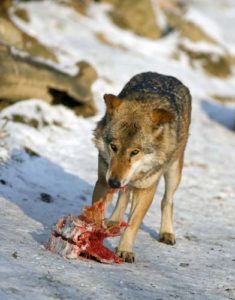 Any type of food can have both a positive and negative impact on the dog's health. A lot of factors come into play when it comes to feeding because each dog's body is unique. However, raw feeders are able to evaluate and adjust the type of food they give to their pets better than owners relying on factory-manufactured dry kibble alone. As such, they can provide dogs with a more complete diet based on the individual dog's nutritional needs.
Any type of food can have both a positive and negative impact on the dog's health. A lot of factors come into play when it comes to feeding because each dog's body is unique. However, raw feeders are able to evaluate and adjust the type of food they give to their pets better than owners relying on factory-manufactured dry kibble alone. As such, they can provide dogs with a more complete diet based on the individual dog's nutritional needs.
Raw feeders who have been doing this for years understand that their dogs don't have to follow an exact diet like their ancestors, the wolves. It's also not advisable to stick to a diet that's purely based on what wolves eat because that will not satisfy the dog's other nutrient requirements.
For instance, a dog that suffers from yeast infection might be given raw goat's milk to help its system. Some other foods might help the dog with different health problems. Wolves don't particularly digest raw goat's milk, even if raw feeders give this to their dogs. Therefore, flexibility is essential, and pet owners who feed their pets a raw diet are not opposed to that.
So, in considering how to build your dog's raw food diet, you can use wild wolves as the foundation for the diet. But after that, you must also learn to weigh the benefits and the drawbacks of certain foods that wolves may or may not eat because they can be good or bad for your dog's health needs, as well as evaluate your pet's current health condition.
3. Plant-based foods are becoming more popular
While meat is still the primary source of calories and nutrients among pet owners feeding raw, there's a growing number of owners looking into including a few other options. Plant-based foods are rich in vitamins, minerals, and nutrients. These are considered functional raw foods that provide some basic nutrition and complement an otherwise meat-heavy diet.
As with human diets, feeding dogs foods culled from plants may help lower their risks for diseases, according to a study in the Research in Veterinary Science. “Functional foods” help dogs thrive, not just survive. It is recommended that pet owners also feed their dogs whole fruits and vegetables, and there are a number of studies showing the benefits that fruits and veggies have on dogs.
There are also other types of functional foods that can deliver immense benefits to your dog’s health, often recommended by holistic veterinarians:
Apple cider vinegar. It has antibacterial properties that help manage the dog's weight against diabetes development. A teaspoon of ACV may be mixed with the dog's food. Plenty of other uses of ACV have been found by pet owners, too.
Coconut oil. It helps to improve the dog's skin and fur due to its antimicrobial properties. It also helps with the dog's digestive system and joint problems, among other benefits. Give half a teaspoonful of coconut oil to dogs twice daily.
Golden Paste with Coconut Oil and Turmeric. This has anti-inflammatory effects on top of its antimicrobial properties. It may help prevent cancer and arthritis development in dogs. To make the paste, mix half a cup of turmeric powder with a cup of water, 1/3 cup of coconut oil, and some ground pepper. Give this mixture to your dogs every day for 1/2 teaspoon to one tablespoon, depending on the size of the dog. Turmeric powder may also be given to dogs as a supplement.
Garlic. This is a controversial one. Generally, garlic is a natural prebiotic that contains loads of vitamins and amino acids, but it's also known as being toxic to dogs. However, some holistic vets claim that in small amounts, it helps the dog's body detoxify because it's anti-parasitic and antimicrobial. Make sure that the garlic you feed the dog is organic and gives no more than 3.4 grams.
Also, different dogs will react differently to garlic. Although it's rarely fatal in small doses, even with a little serving, the dog might experience stomach upset, diarrhea, or episodes of vomiting. A study in the journal Interdisciplinary Toxicology stated that when given in moderation, garlic is safe for dogs. A garlic weighing 15 grams might be too big of a dose. Take note that a clove of garlic is about 3 grams.
4. More raw feeders are including mushrooms
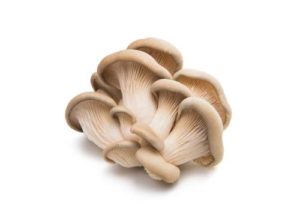 Mushroom is regarded as a superfood in the human diet because it's rich in nutrients. While there are no studies on this, some vets claim the same benefits for dogs. Note that there are many types of mushrooms that might be poisonous to dogs.
Mushroom is regarded as a superfood in the human diet because it's rich in nutrients. While there are no studies on this, some vets claim the same benefits for dogs. Note that there are many types of mushrooms that might be poisonous to dogs.
Studies show that when given in moderation and the right type of mushroom, this functional raw food can protect both dogs and humans from various diseases and help the cells and organs regenerate.
According to the American Kennel Club, the mushrooms to avoid include:
- Amanita phalloides or death cap
- Galerina marginata or Galerina
- Amanita gemmata or jeweled deathcap
- Amanita muscaria or fly agaric
- Gyromitra spp. or false morel
- Inocybe spp or Clitocybe dealbata
5. Feeding a lot more organ meats than before
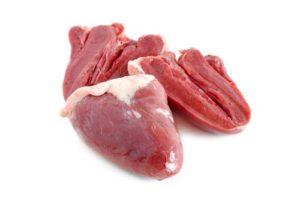 Most raw feeders follow a ratio of 80 percent raw meat, 10 percent dog bones, and 10 percent organs. However, more proponents and experts of raw feeding now recommend increasing the organ portion to at least 25 percent of the meals since these have more nutrients that the dogs could be missing out on.
Most raw feeders follow a ratio of 80 percent raw meat, 10 percent dog bones, and 10 percent organs. However, more proponents and experts of raw feeding now recommend increasing the organ portion to at least 25 percent of the meals since these have more nutrients that the dogs could be missing out on.
When making your dog's raw meal, mix the portion up with liver, kidney, skin, ovaries, or testes, and brain since these are extremely rich sources of vitamin B, iron, zinc, copper, DHA, and vitamin D, much healthier than just muscle meat.
If you decide to feed your dog a raw diet, remember that these trends are just guiding principles and options to consider for your dog; they're not rules, and the only law to follow is to adjust the diet based on your individual dog's needs. You and your vet are still the best people who can tell what’s good or bad for your pooch when it comes to diet.
READ NEXT: 10 Best Natural Homemade Raw Dog Food Recipes
Pin and share with other dog owners:


